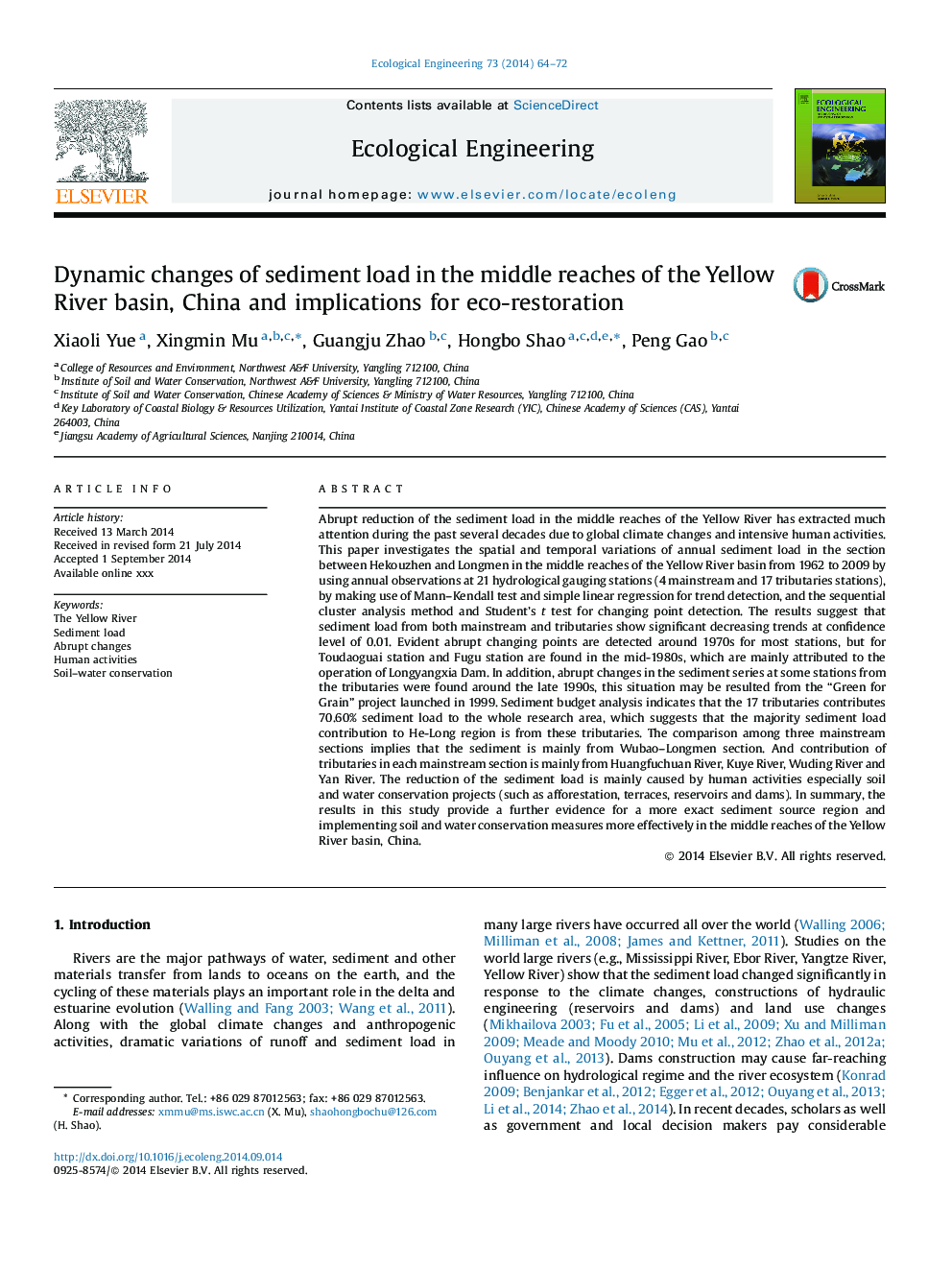| Article ID | Journal | Published Year | Pages | File Type |
|---|---|---|---|---|
| 6301851 | Ecological Engineering | 2014 | 9 Pages |
Abstract
Abrupt reduction of the sediment load in the middle reaches of the Yellow River has extracted much attention during the past several decades due to global climate changes and intensive human activities. This paper investigates the spatial and temporal variations of annual sediment load in the section between Hekouzhen and Longmen in the middle reaches of the Yellow River basin from 1962 to 2009 by using annual observations at 21 hydrological gauging stations (4 mainstream and 17 tributaries stations), by making use of Mann-Kendall test and simple linear regression for trend detection, and the sequential cluster analysis method and Student's t test for changing point detection. The results suggest that sediment load from both mainstream and tributaries show significant decreasing trends at confidence level of 0.01. Evident abrupt changing points are detected around 1970s for most stations, but for Toudaoguai station and Fugu station are found in the mid-1980s, which are mainly attributed to the operation of Longyangxia Dam. In addition, abrupt changes in the sediment series at some stations from the tributaries were found around the late 1990s, this situation may be resulted from the “Green for Grain” project launched in 1999. Sediment budget analysis indicates that the 17 tributaries contributes 70.60% sediment load to the whole research area, which suggests that the majority sediment load contribution to He-Long region is from these tributaries. The comparison among three mainstream sections implies that the sediment is mainly from Wubao-Longmen section. And contribution of tributaries in each mainstream section is mainly from Huangfuchuan River, Kuye River, Wuding River and Yan River. The reduction of the sediment load is mainly caused by human activities especially soil and water conservation projects (such as afforestation, terraces, reservoirs and dams). In summary, the results in this study provide a further evidence for a more exact sediment source region and implementing soil and water conservation measures more effectively in the middle reaches of the Yellow River basin, China.
Related Topics
Life Sciences
Agricultural and Biological Sciences
Ecology, Evolution, Behavior and Systematics
Authors
Xiaoli Yue, Xingmin Mu, Guangju Zhao, Hongbo Shao, Peng Gao,
